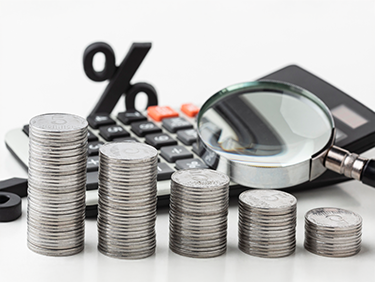
-
Egypt’s external position vulnerability renders further EGP devaluation accompanied by interest rate hikes necessary, in our view about Egypt Financials
-
For Egypt Financials, we expect further working capital loan growth, moderate deposit increases, maintained NIMs and pressured asset quality over the rest of 2022e
For Egypt Financials, we expect loans to be mostly geared towards working capital financing and deposits to increase moderately on higher competition from public banks: We expect CAPEX lending to be delayed beyond 2022 while tight corporate liquidity to be the main driver for increasing working capital loans in 2022. Accordingly, we expect average 2022e loan growth of c17% y-o-y for banks under our coverage, largely similar to the 2021 average growth of c16% y-o-y. On the liability side, we expect deposits to increase at a 2022e average of c10% y-o-y down from c19% y-o-y in 2021 due to higher competition from high-interest deposits issued by public banks, which we expect to be reintroduced soon in an attempt to combat dollarization. We expect Crédit Agricole Egypt (CAE) to maintain its conservative balance sheet growth, increasing its deposits by c6% in 2022e compared to c12% for Commercial International Bank (CIB) and c11% for Abu Dhabi Islamic Bank-Egypt (ADIB). We expect banks to mostly take advantage of rising treasury yields which we expect to increase to c18% from c16% currently, however, face some pressure due to our expected increase in the cost of funding. Should our view on interest rates materialize, we expect banks’ NIMs to remain intact, averaging 5.7% in 2022 for banks under our coverage, slightly up from 5.4% in 2021. Accordingly, we expect CAE to face less pressure from increasing funding costs, leading to a 2022e NIM estimate of 6.2% compared to 5.8% for CIB and 5.2% for ADIB Egypt. For ADIB Egypt, we note that the bank relied on high-interest fixed deposits in the past to increase its market share, which led to lower NIMs than peers. In a rising interest rate environment, we expect banks with short or negative asset-liability duration gaps to show the highest bounce in their NIMs as their assets reprice quicker than their liabilities. As such, we expect ADIB-Egypt’s NIMs to increase by 50 bps y-o-y to 5.2% in 2022e, backed by its negative asset-liability duration gap of ten months as of December 2021. We expect CAE’s 2022e NIMs to increase by 40 bps y-o-y to 6.2% (backed by its asset-liability duration gap close to zero). However, we expect CIB’s NIMs to remain at 5.8% in 2022e, the same as last year, backed by its positive asset-liability duration gap of ten months. For CIB and CAE, we largely maintain our 2022–26e earnings estimates as our higher NIMs estimates are largely offset by higher provisioning estimates. For ADIB-Egypt, we raise our 2022–26e earnings estimates by c32%. This reflects our higher growth assumptions following the full completion of its capital increase to EGP5.0bn, which management expects to take place after it finalized an EGP2bn capital increase.
We believe the challenging business environment imposes a threat to the banks’ asset quality; however, we expect it to be contained due to adequate capital buffers: We expect an average 2022e non-performing loan (NPL) ratio of 4.2% for banks under our coverage, up from 3.8% a year earlier, reflecting challenging economic conditions. Accordingly, we expect 2022e provision expenses for the three banks to average c12% of net operating income, up from c10% in 2021e, with an average 2022e coverage ratio of c145%, down from c161% in 2021. We believe banks under our coverage are adequately capitalized, with a capital adequacy ratio (CAR) of 22.7% for CAE (as of March 2022), 13.8% for ADIB-Egypt and 28.8% for CIB (as of June 2022). In our numbers, we account for ADIB-Egypt’s second capital increase planned to take place by the end of 2022 or the beginning of 2023, increasing its paid-in capital to EGP5.0bn after successfully implementing the first phase of the rights issue in August, doubling its paid-in capital to EGP4.0bn. For CIB, the bank’s management is unlikely to distribute a special dividend hence maintaining its high capitalization. Given our 2022–26e balance sheet growth estimates, we expect a CAR average of c17% for CAE, c16% for ADIB-Egypt, and c20% for CIB.


